Wednesday following the river Ivalojoki
I woke up to a rainy morning. Teemu was still sleeping. We slept under the tarp set up in the "A" style, a.k.a. wind tunnel, and a two-person mosquito net inside. During the night, Teemu had rolled out from the net once, and I had rolled him back and set up the net. Teemu's left cheek was showing where he had leaned against the net.
My plan had been to dry stuff when the rain stopped in the morning, but it always started again. Thus I dried the sleeping bag in the open hut. One man had slept in the hut (room for 8). There was still no movement in the tent that had been there since yesterday, and Teemu suspected that it might be just for scenery. We went through the gold rush museums at Kultala, but Teemu was not impressed by gold history or old buildings.
There is a path along Ivalojoki all the way to Sotajoki. Half of it is marked on the map too. Sometimes it is easy to follow through light vegetation, but sometimes we completely lost it at rocky places. Then we had to look for rocks that had less lichen on top: footsteps have worn it off. During peak flood in the spring, the water had been at least 3 m higher. We were mostly 1-2 m from the river surface.
It was somehow fascinating to follow a secret path that can't be found on maps. I tried to keep track of our precise location but in vain. Anyway, we were heading to another river, and it could not be missed.
I made Teemu cook us lunch. He has practiced lighting the gas during chemistry classes, but he told me that it is always done in pairs and with a slight panic. This time he had to manage alone. Only 3 km behind us today, but the trail had been a difficult one.
Most of the Lapland flora is known to me, but now I spotted a tiny pink flower. This one I had never seen before. I took a photo for mum and dad to recognise. To my huge surprise back home, they didn't. I had to flip through a couple of books to find that it is Primula stricta. It grows on river banks and especially at Ivalojoki.
After Björklundinoja we started to see marks of civilisation: bootprint, cayak tied on a tree, tarp tent, fire ring, gold washing equipment. No people though. I guess that the summer holidays will bring gold miners to their claimed land.
When planning the route I had read that the river Sotajoki can be forded. It has been a while since I forded a river, and Sotajoki would be Teemu's first one if we managed. At the river mouth it looked quite rapid and difficult. Nothing better was found when searching upstream. This would be it.
We looked for good staffs in the forest. I taught Teemu the basics: keep a good support on the staff on the downstream side, always find a stable place before the next step, open the hip belt. My risk analysis showed that there was an open hut nearby if we needed to dry clothes, we both had the essentials if one backpack was lost, and the nearest road was only a couple of hours on a path. I told Teemu that it was ok to turn back if he found the fording impossible. Then a piece of chocolate and into the water.
It was not freezing, or maybe it was the adrenaline warming us up. First Teemu was walking behind me, but halfway into the river we were holding hands. Water was up to the knees, and half-thigh during the last meters. We chose to walk with shoes on, because they were wet anyway.
The opposite river bank was steep and 15 m tall. On top we poured water out of the shoes and squeezed our socks. Teemu wondered wheter to eat a second chocolate bisquit, "well why not?" We were looking down to the river and wondering what we just did. I congratulated Teemu for the new achievement.
A man named Toivo Liljeqvist had come to the gold lands in the 1940s and built a
hut for himself in 1948. Now it is an open hut maintained by the goverment. I was not
expecting such a small hut, but this one was really sympathetic and would heat
quickly. According to the guest book, the previous visitor has heated it in March. I
told Teemu that we could stay and dry the shoes, but he said he would hike for a lot
longer. So we took a last glance at the tiny sauna built half underground. A sign
said it was a museum and that it is forbidden to heat it.
Shortly after Liljeqvist we came to a spot that looked much better for fording.
Already on the right side, we did not try. Instead, we headed uphill along a rover
path, towards small lakes that have been called pretty. Teemu got a new hiking
achievement: crawl under the reindeer fence. I thought there would be a gate when the
path changed from one side of the fence to the other.
The nights would be cold. We did not set the tarp at the lake shore but a bit higher to avoid cold, and tried to look for shelter under a big pine tree. I was stupid enough to let myself cool down before hiding into the sleeping bag. The mere thought of a cold night made me shiver.
- Nature observations: spring tide is high, based on the grass on trees. Primula stricta is a new flower in my collection.
No people after Kultala
- Approximately 12 km through a difficult terrain
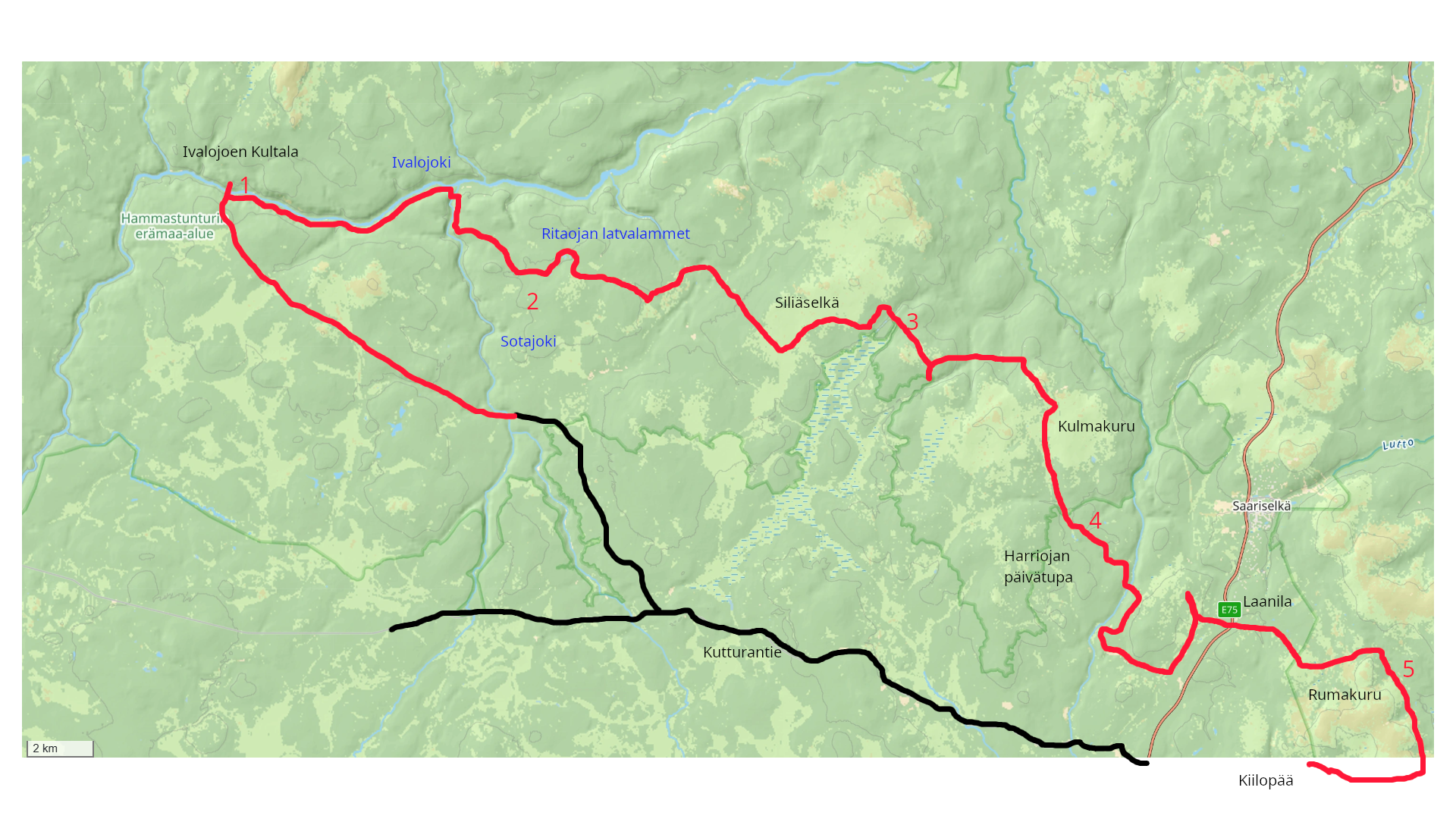
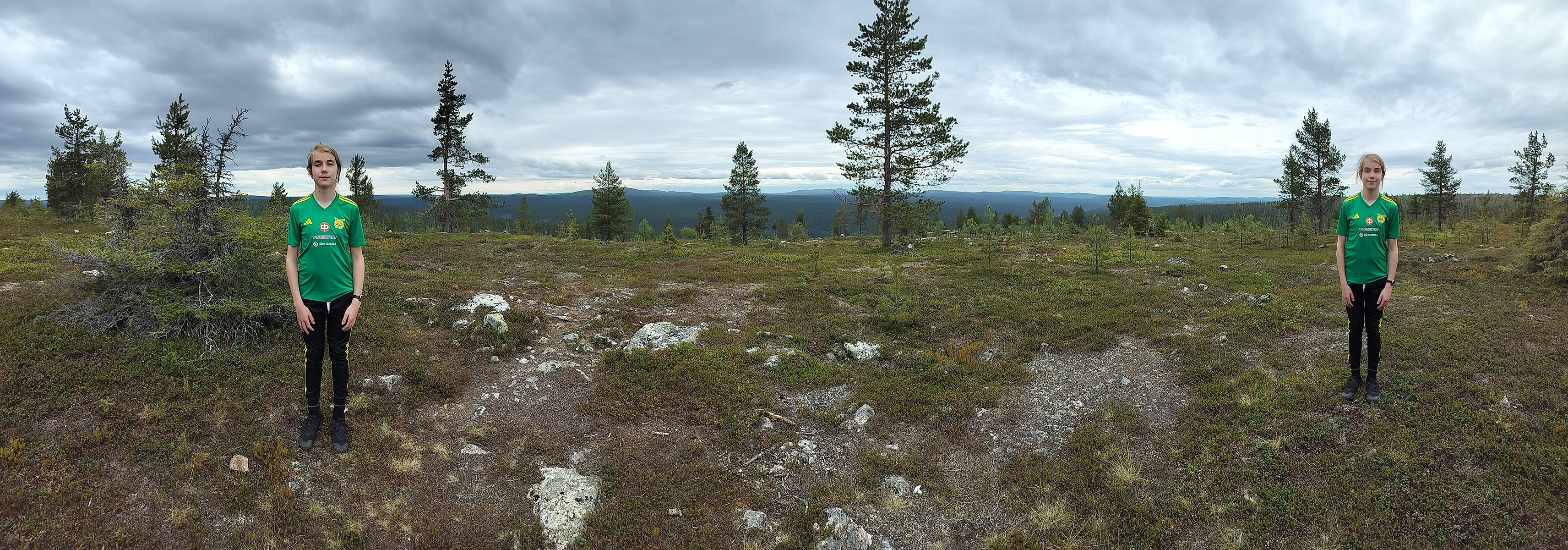 Teemu with a Teemu.
Teemu with a Teemu.
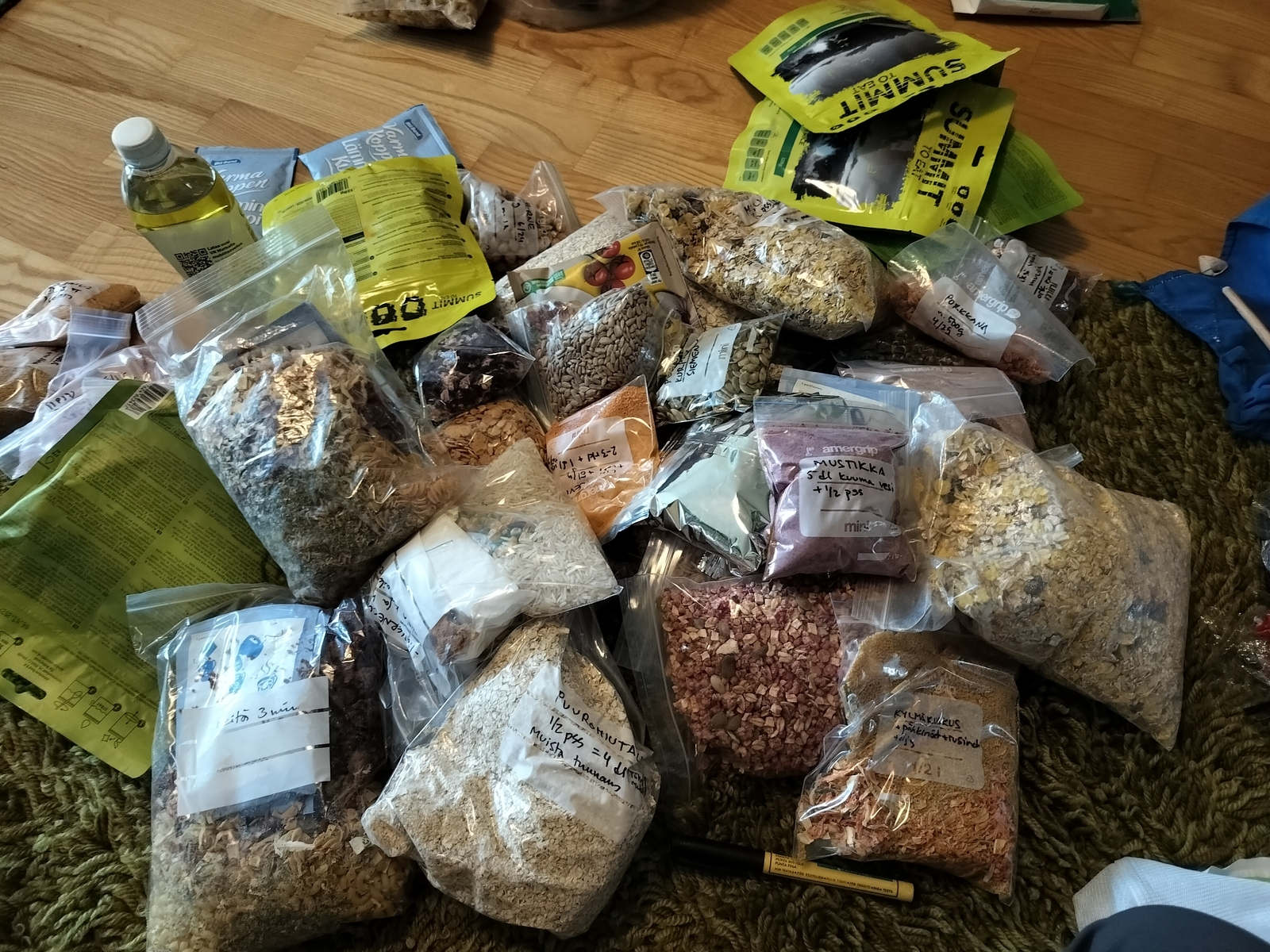
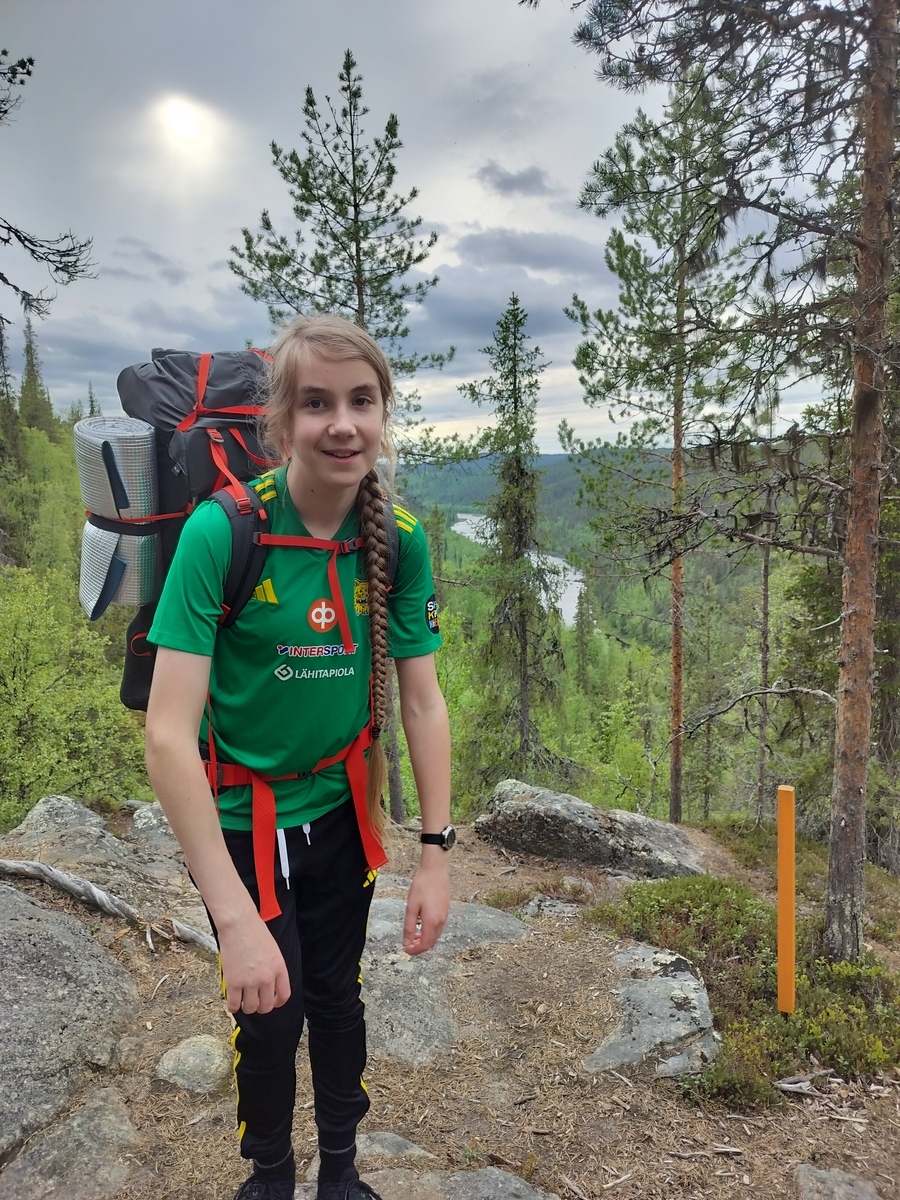 The cliff named after Mr. Conrad Lihr. We did not manage to follow the orange poles.
The cliff named after Mr. Conrad Lihr. We did not manage to follow the orange poles.
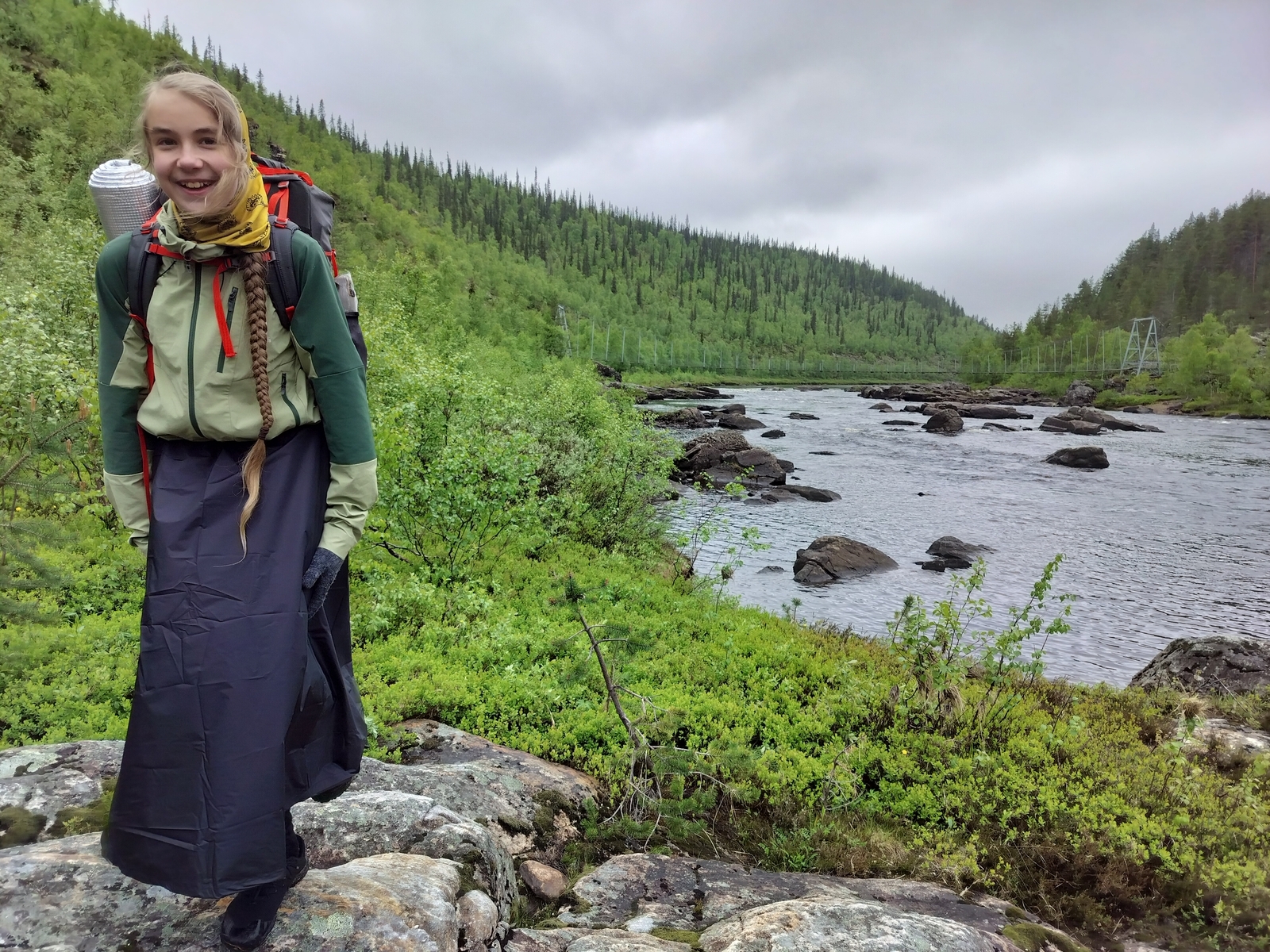 Wearing a rain skirt will make you jolly. Suspension bridge in the back.
Wearing a rain skirt will make you jolly. Suspension bridge in the back.
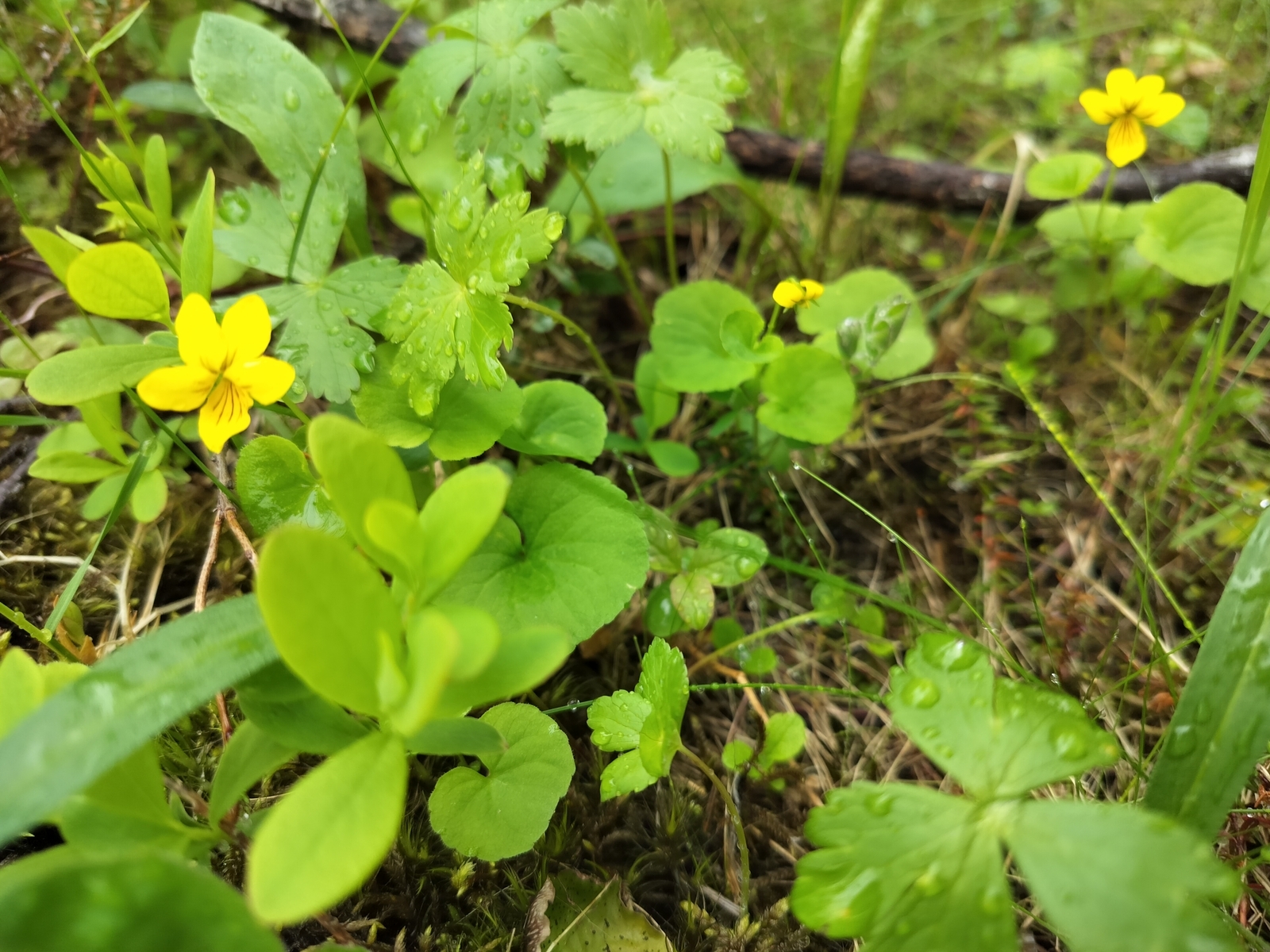 Viola biflora.
Viola biflora.
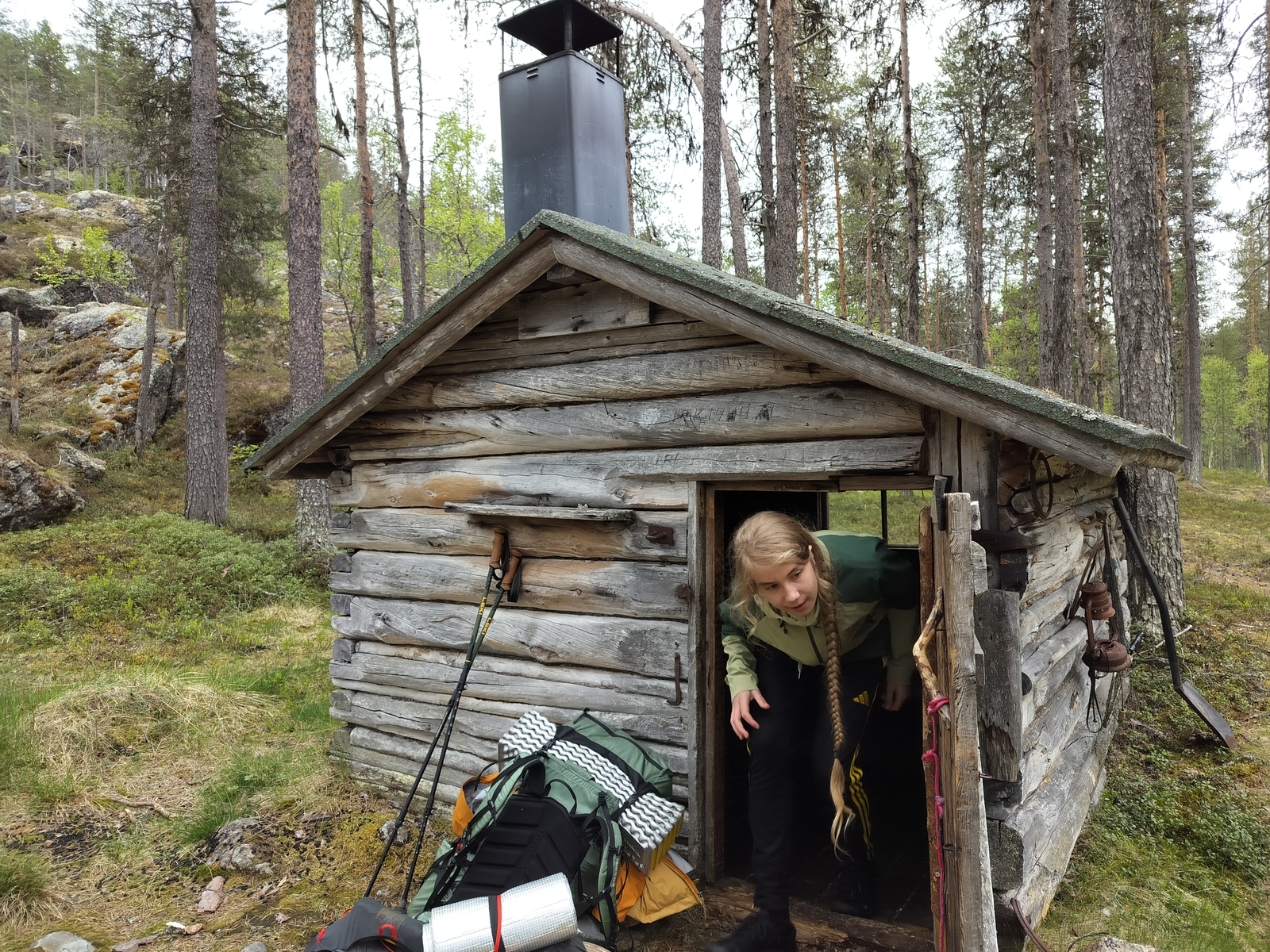 Bow to enter or exit the Liljeqvist hut.
Bow to enter or exit the Liljeqvist hut.
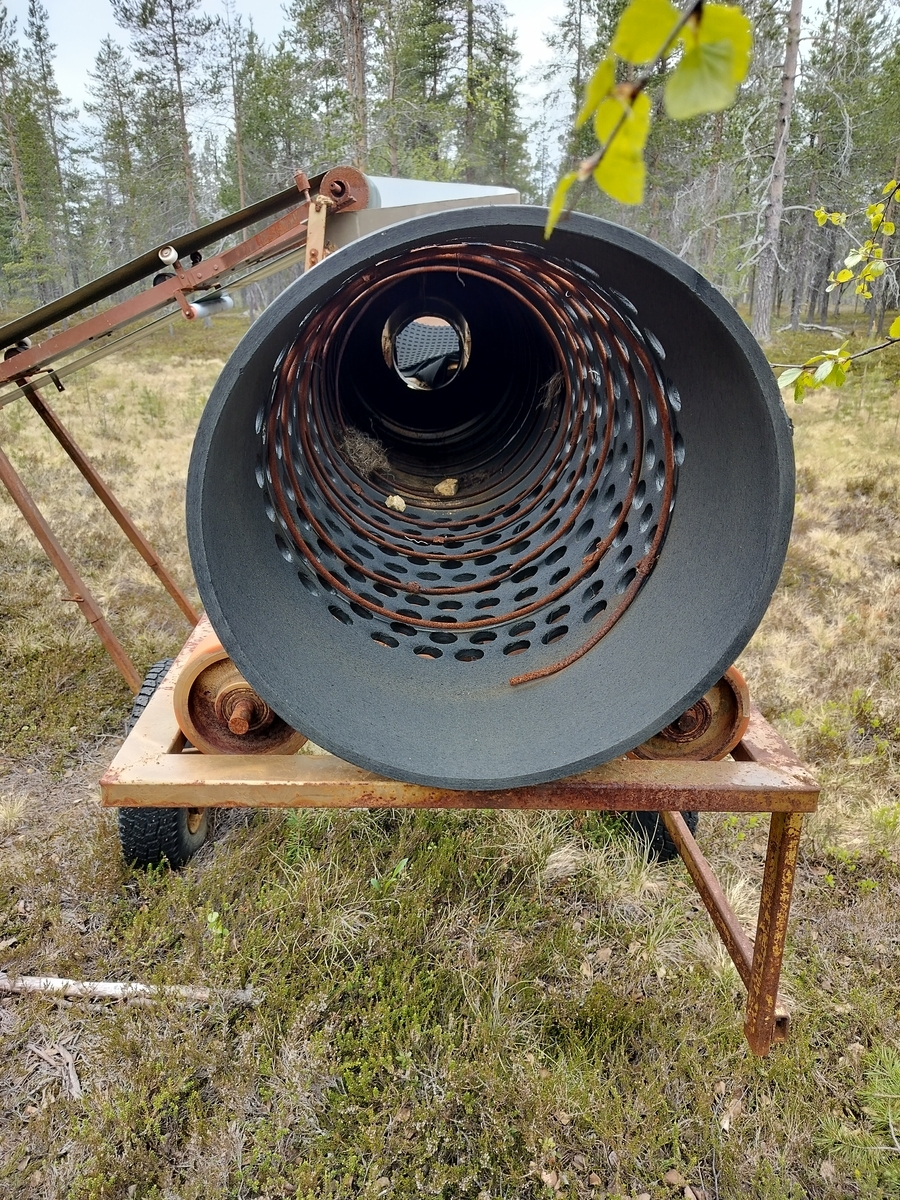 Automated gold washer.
Automated gold washer.
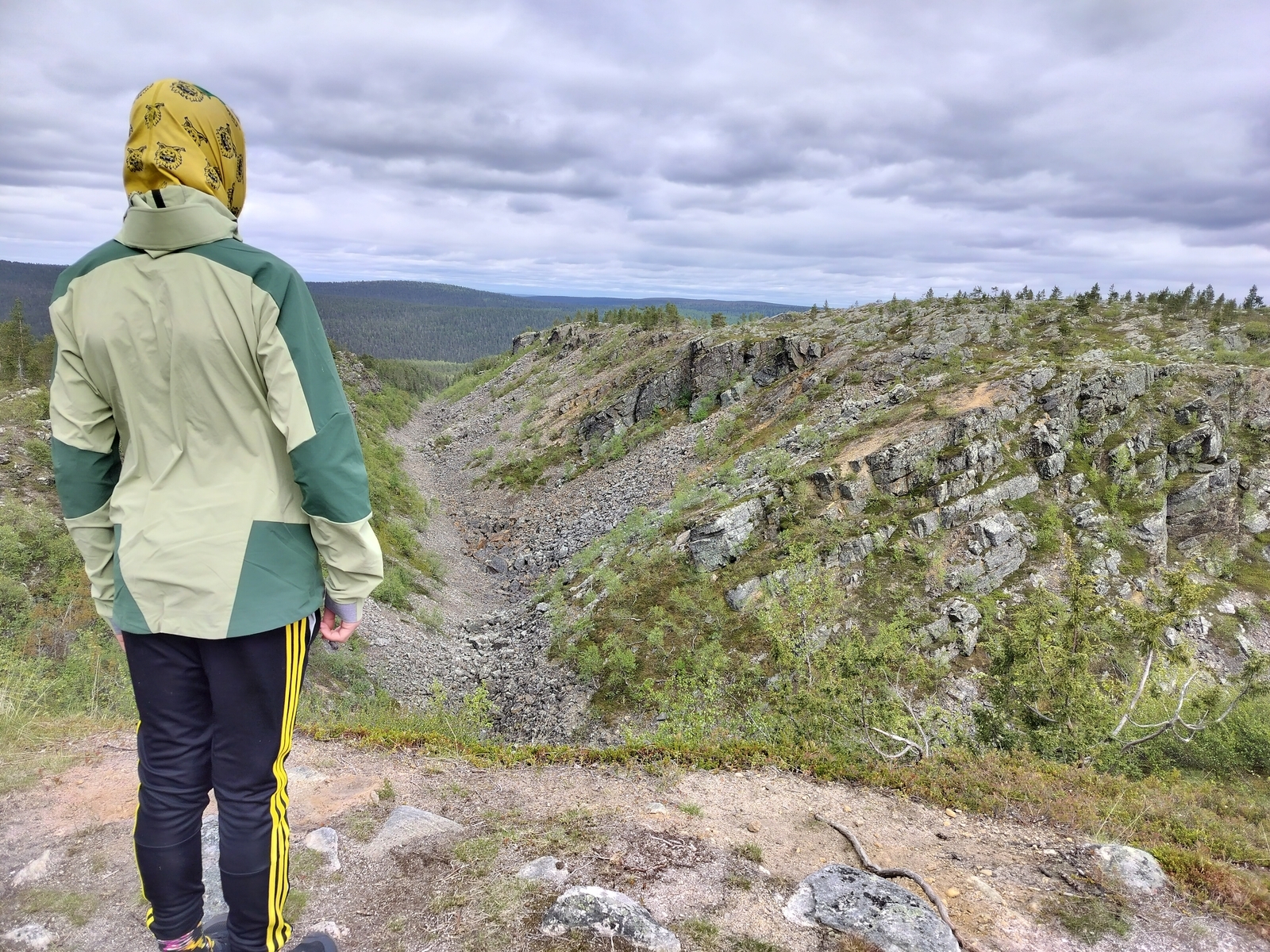 Teemu does not jump into Kulmakuru.
Teemu does not jump into Kulmakuru.
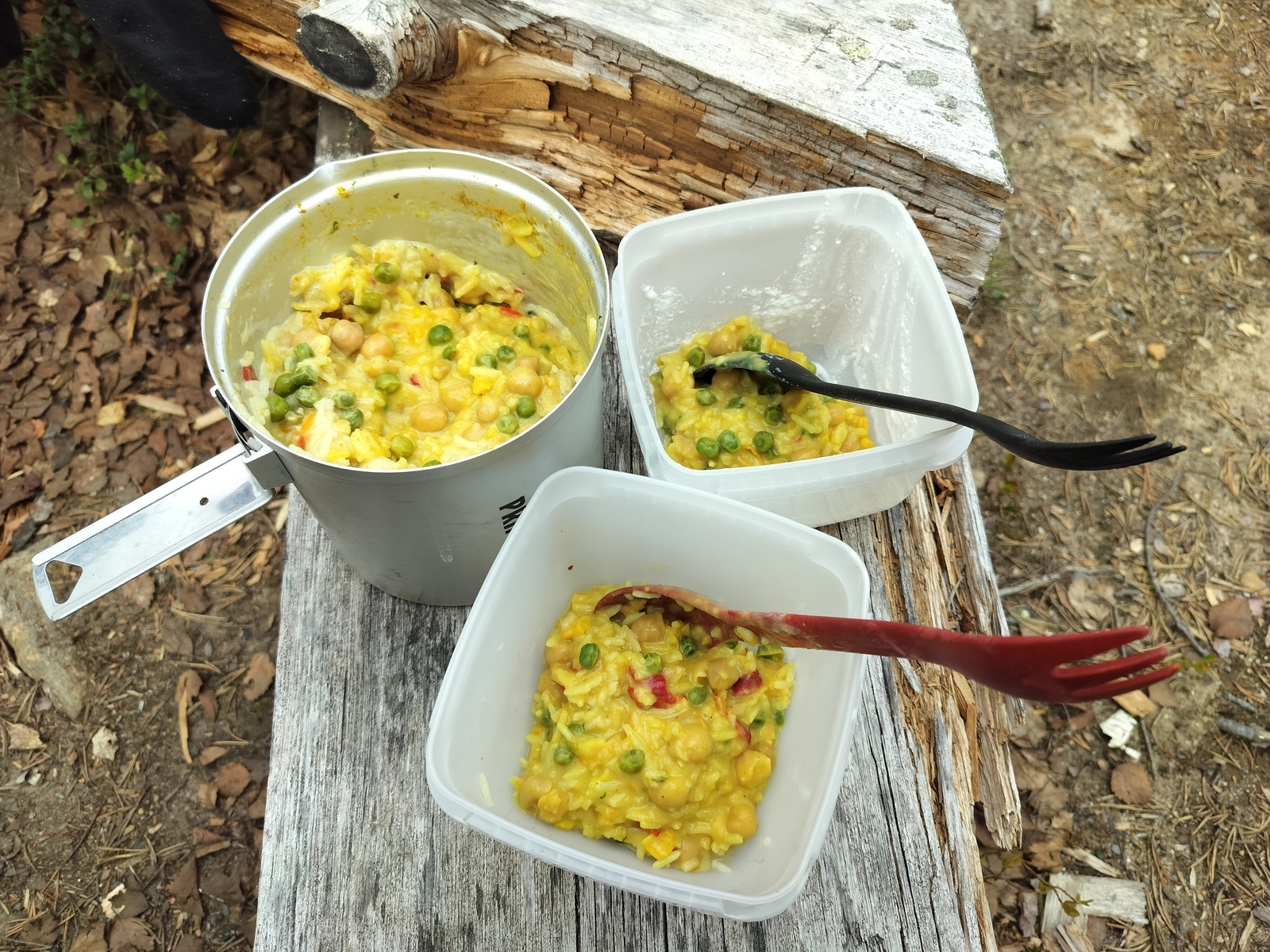 Food blog photo.
Food blog photo.
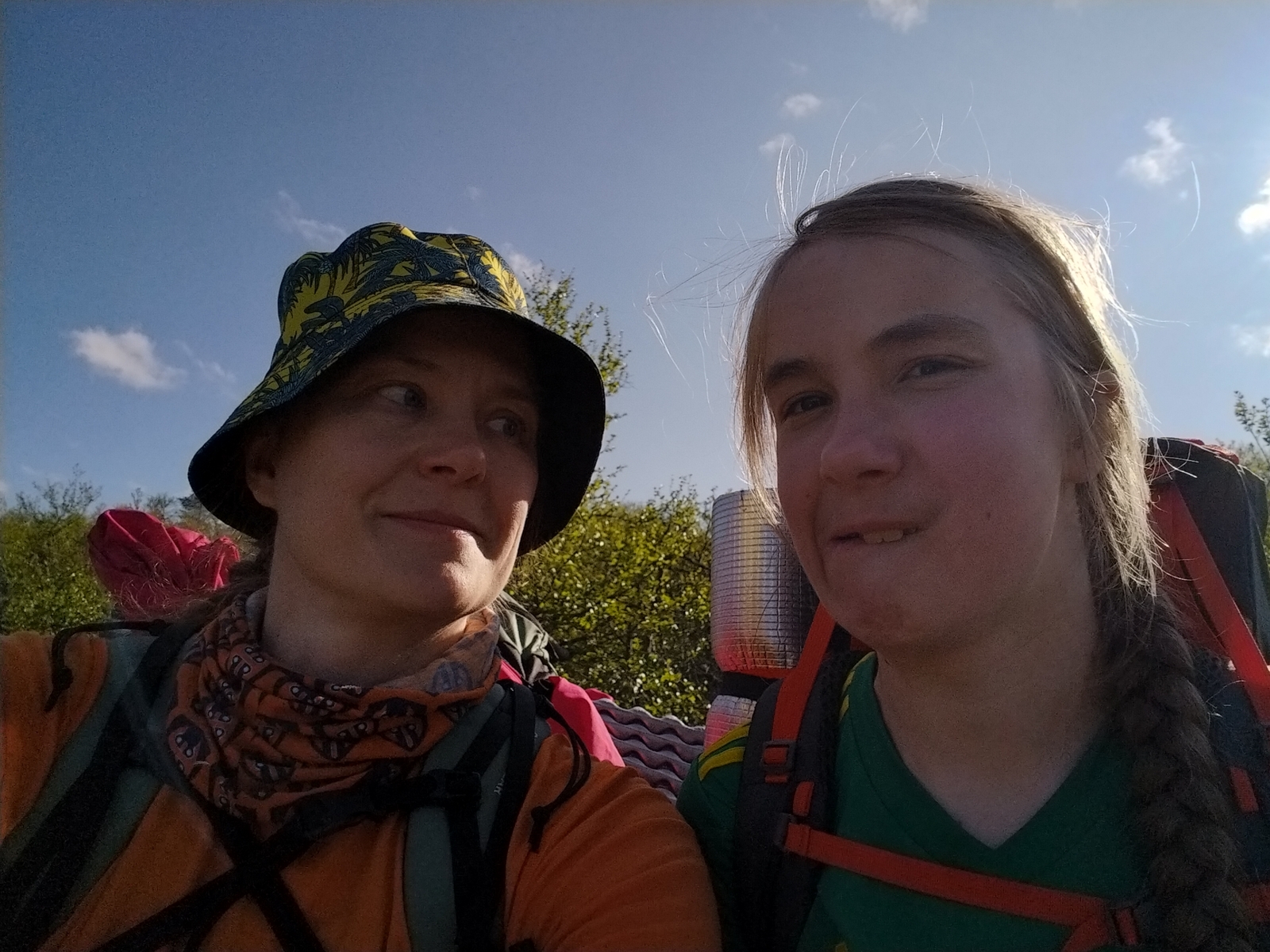 Backlit hikers.
Backlit hikers.
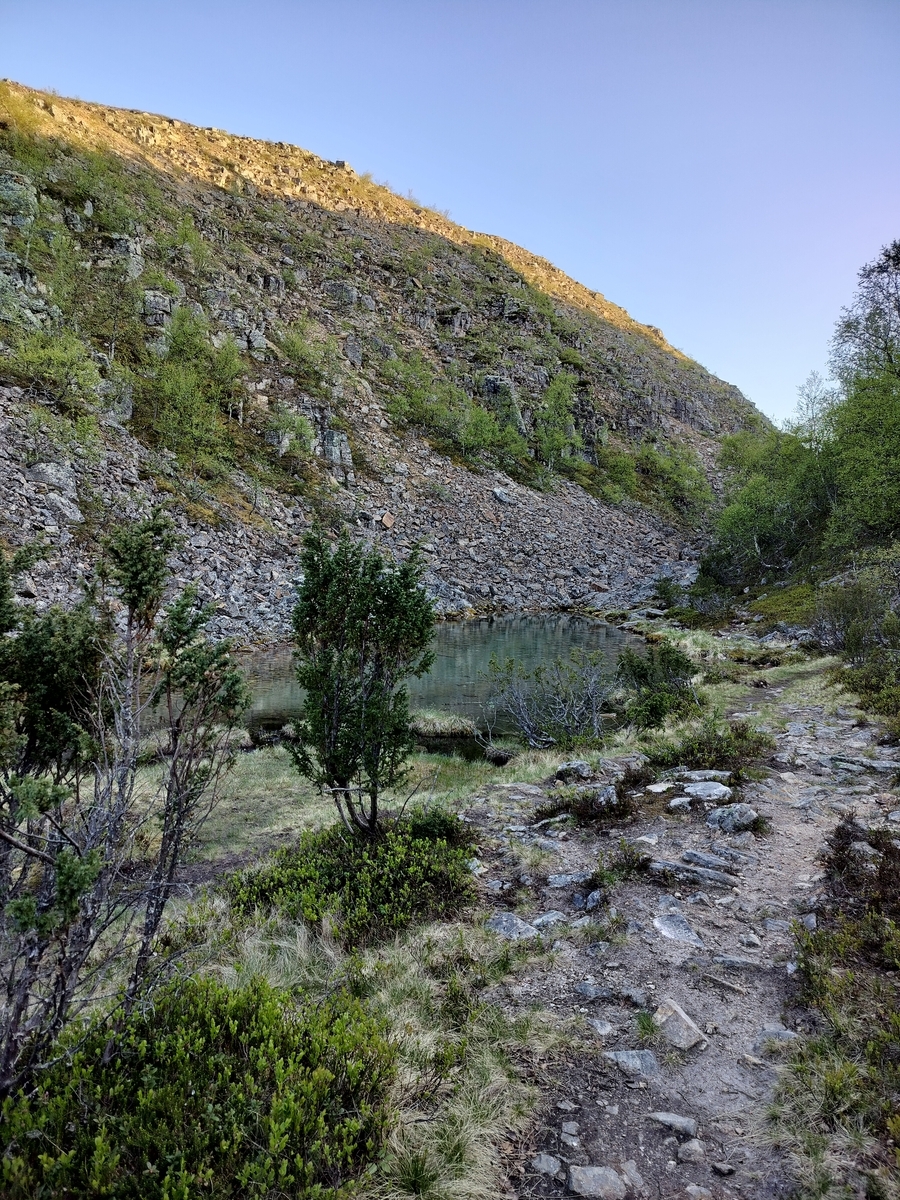 The "Ugly gorge" turned out not to be very ugly.
The "Ugly gorge" turned out not to be very ugly.
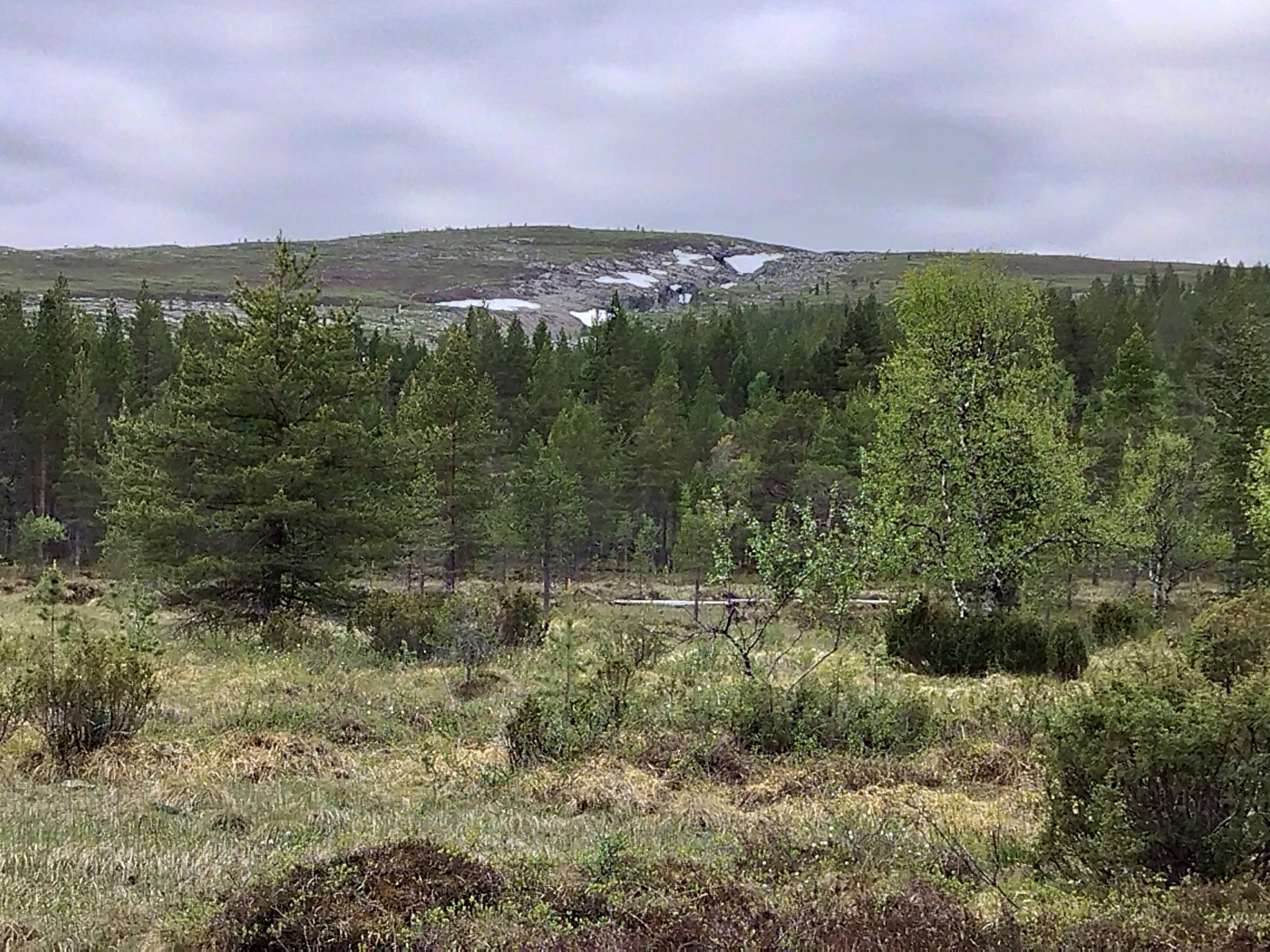 Snowy gorges.
Snowy gorges.
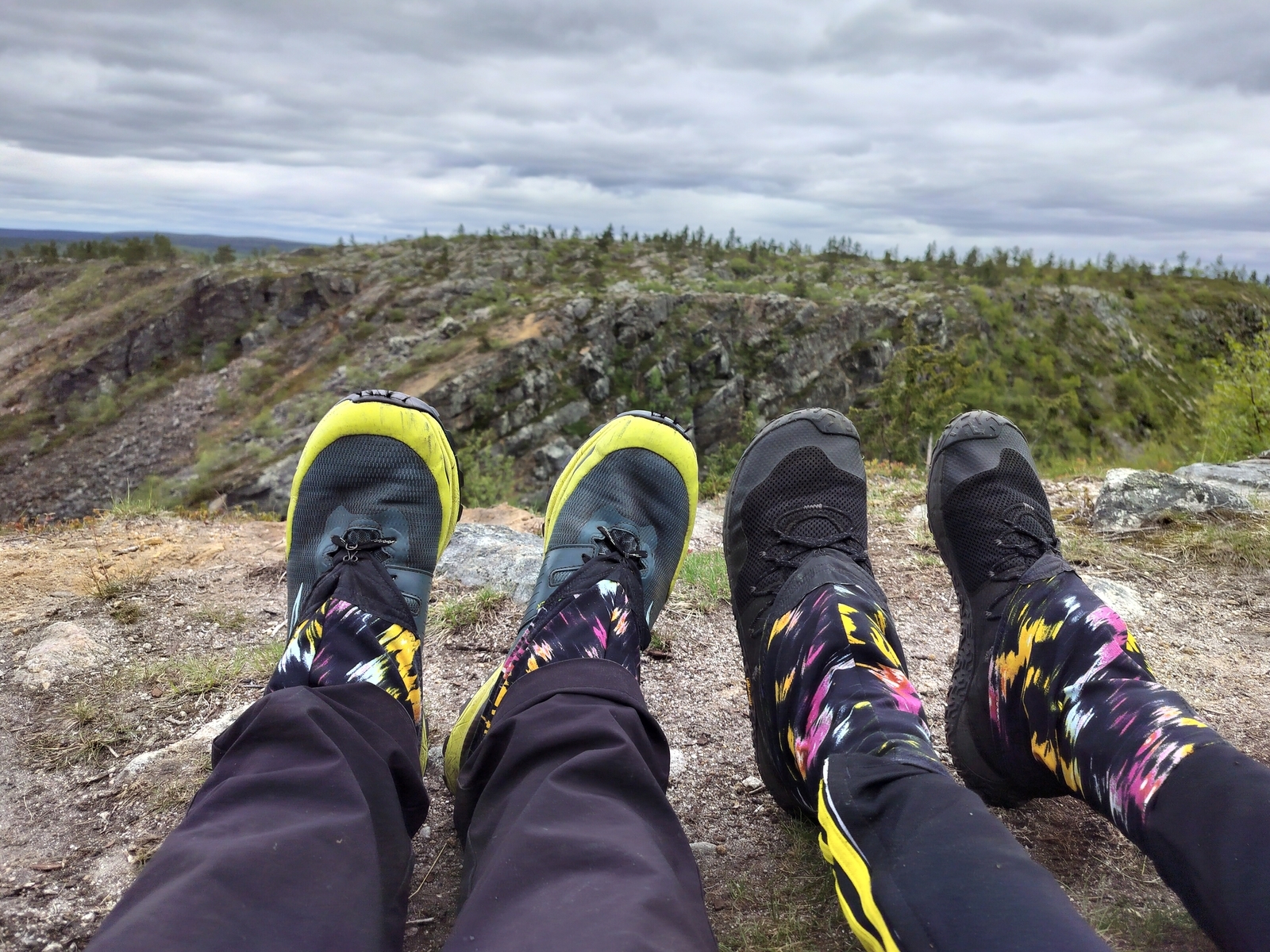 Kulmakuru.
Kulmakuru.